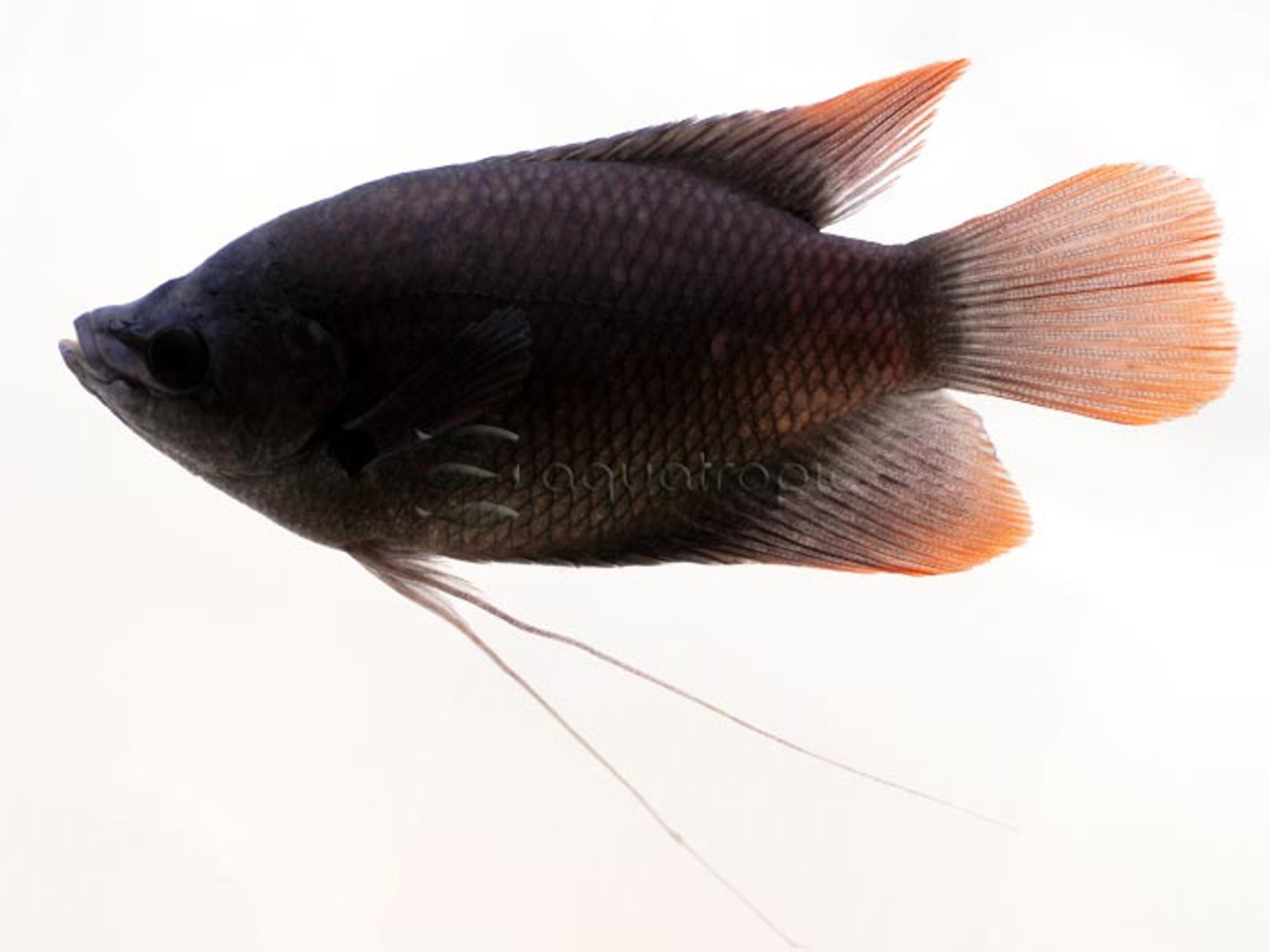Giant Red Tail Gourami (Osphronemus laticlavius)

When fully grown at around 20 inches, the Giant Red Tail Gourami (Osphronemus laticlavius) makes for one of the most vibrant and personable of aquarium fishes. This puppy-like species will quickly learn to recognize when aquarists are nearby, swimming towards the front of the aquarium in excitement with the hope that food will soon be delivered its way. If you listen closely, you can almost hear it whining in a little fishy voice.
Despite its large size and colorful finnage, this species was only scientifically described in 1992 and is reported only from portions of Northern Borneo. Previously, it had been confused with its more well-known and widespread sibling, the Giant Gouramy (Osphronemus goramy).
Given its eventual size, the Giant Red Tail Gourami will ultimately require some seriously spacious accommodations… somewhere in the neighborhood of 200 gallons or more. In warmer climes, this is an excellent fish for outdoor ponds (and it bears mention that in Southeast Asia Giant Gouramis are regarded as an excellent fish for human consumption, lacking those annoying intramuscular bones common to carp).
The natural diet of Osphronemus is omnivorous, with a strong herbivorous component. In captivity, just about any food will be accepted, from pellets to flakes and even smaller fishes. The ideal tank mate will be robust enough to avoid being eaten, but not anything overly belligerent. For an Asian-themed biotope, try some of the larger loaches and barbs from these waters, but plenty of other good options exist from elsewhere in the world. Geophagine cichlids, knifefishes, rays, larger catfishes, etc.
Multiple specimens can be housed together, provided the accommodations are suitably large. It is reported that O. laticlavius can become increasingly intolerant of other fishes with age, so caution must be exercised when attempting to add new tankmates. Large pieces of driftwood and thick-leaved plants (Anubias, Java Fern, Mosses) provide ideal decorations to help mitigate aggression, but be sure to avoid any of the tastier varieties of foliage, as these will almost certainly wind up as salad for the gourami.